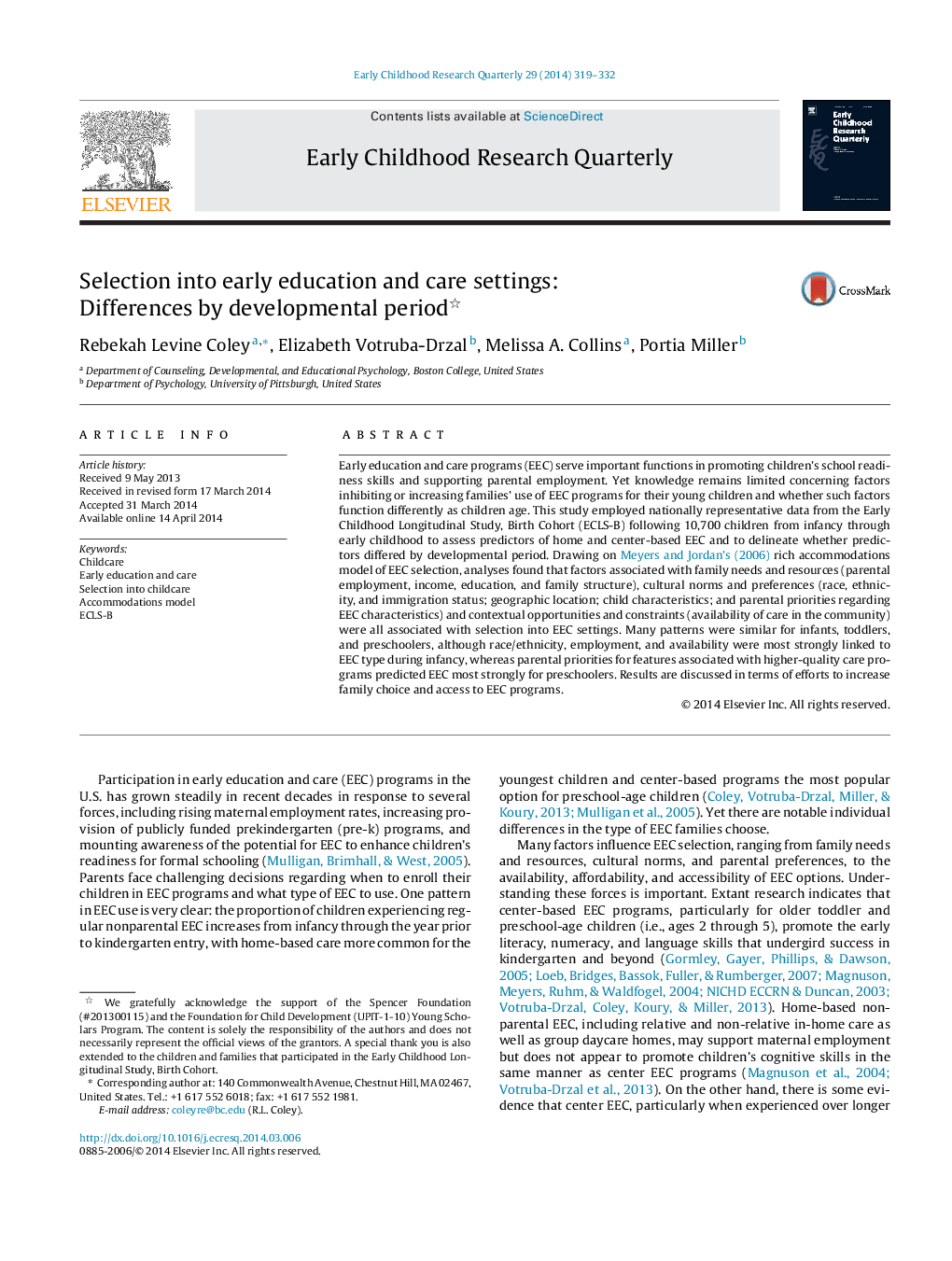| Article ID | Journal | Published Year | Pages | File Type |
|---|---|---|---|---|
| 353782 | Early Childhood Research Quarterly | 2014 | 14 Pages |
•We assessed a comprehensive accommodations model of selection into EEC settings and whether predictors of selection differed by child age.•Family needs, family resources, social norms and preferences, and contextual constraints significantly predicted EEC selection.•Race/ethnicity, maternal employment, and EEC availability most strongly predicted EEC type for infants.•Parental preferences for higher quality care were stronger predictors of EEC for preschoolers.
Early education and care programs (EEC) serve important functions in promoting children's school readiness skills and supporting parental employment. Yet knowledge remains limited concerning factors inhibiting or increasing families’ use of EEC programs for their young children and whether such factors function differently as children age. This study employed nationally representative data from the Early Childhood Longitudinal Study, Birth Cohort (ECLS-B) following 10,700 children from infancy through early childhood to assess predictors of home and center-based EEC and to delineate whether predictors differed by developmental period. Drawing on Meyers and Jordan's (2006) rich accommodations model of EEC selection, analyses found that factors associated with family needs and resources (parental employment, income, education, and family structure), cultural norms and preferences (race, ethnicity, and immigration status; geographic location; child characteristics; and parental priorities regarding EEC characteristics) and contextual opportunities and constraints (availability of care in the community) were all associated with selection into EEC settings. Many patterns were similar for infants, toddlers, and preschoolers, although race/ethnicity, employment, and availability were most strongly linked to EEC type during infancy, whereas parental priorities for features associated with higher-quality care programs predicted EEC most strongly for preschoolers. Results are discussed in terms of efforts to increase family choice and access to EEC programs.
